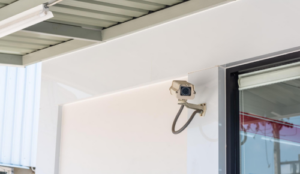As the world faces growing environmental challenges, more businesses are looking for ways to reduce their impact on the planet. Facilities managers, the people who look after buildings and workplaces, play a big role in helping organisations become more sustainable. By making smarter choices in how buildings are run, maintained and used, facilities managers can cut carbon emissions, save energy and support greener ways of working. In this article we’ll look at how to successfully integrate sustainability in facilities management and create sustainable facilities that benefit both people and the environment.
What is sustainability in facilities management
Sustainability in facilities management refers to the integration of environmentally responsible practices across building operations and infrastructure. This includes optimising energy usage, conserving water, reducing waste, adopting sustainable materials, and ensuring the health and well-being of occupants. A sustainable facility not only functions efficiently but also aligns with broader environmental, social and governance (ESG) goals.
Why sustainability matters in facilities management
Buildings are responsible for a large share of global energy use and carbon emissions. According to the International Energy Agency, buildings account for nearly 40% of energy related CO2 emissions worldwide. Facilities managers are in a unique position to make a difference. Whether it’s through choosing eco-friendly products, cutting energy waste, or improving recycling, small changes can add up to a big impact. Sustainability in facilities management isn’t just about doing what’s right for the planet, it also helps to reduce costs, improve health and wellbeing and meet growing legal and customer expectations.
Simple ways to make facilities more sustainable
Here are some practical and achievable ways to build sustainability into your day-to-day facilities management activities.
Monitor and manage energy use
Keeping track of how much energy your building uses is one of the best ways to cut waste.
- Install smart meters and sensors to see where energy is being used
- Use building management systems to control heating, lighting and air conditioning more efficiently
- Switch to LED lighting and set up motion sensors so lights only come on when needed.
- Encourage staff to turn off computers and equipment when not in use.
Switch to renewable energy
Where possible, consider moving to renewable energy sources. Not only do these reduce emissions, but it can also lower energy bills over time. Many organisations now choose green electricity tariffs or install their own systems like:
- Solar panels
- Ground or air source heat pumps
- Wind turbines (for larger sites)
Improve waste management
Reducing waste is a key part of creating sustainable facilities. Facilities managers can help by:
- Providing clear recycling bins around the workplace
- Working with waste contractors who offer greener solutions
- Reducing single use items in kitchens and staff rooms
- Donating or recycling old furniture, tech and supplies instead of sending them to landfill.
The goal is to think in terms of a circular economy where materials are reused, repaired and recycled, not just thrown away.
Use sustainable cleaning and maintenance products
Cleaning products and building materials can have a big environmental impact. Try to:
- Choose low chemical, biodegradable cleaning products
- Use equipment that saves water and energy
- Avoid harsh chemicals that can harm indoor air quality
- Work with suppliers who have strong sustainability policies
By making better choices in everyday products, you reduce harm to the planet and create a healthier environment for building users.
Make water use more efficient
Water saving steps are easy to put in place and can make a big difference:
- Install low flow taps, toilets and urinals
- Fix leaks quickly to avoid waste
- Collect and reuse rainwater for grounds maintenance or toilet flushing
- Educate staff about reducing unnecessary waste
Saving water is especially important during hot summers in areas facing droughts.
Choose sustainable suppliers and contractors
Sustainability isn’t just about what you do on site – it’s also about who you work with. Try to:
- Select suppliers that follow eco friendly practices
- Ask for proof of environmental certifications
- Work with local companies to reduce transport emissions
- Build sustainability checks across your entire supply chain
Encourage sustainable travel
Facilities teams can also support greener commuting and business travel by;
- Installing cycle racks and shower facilities
- Offering electric vehicle charging points
- Supporting car-sharing schemes or public transport options
- Using virtual meetings instead of travel when possible
This helps reduce the carbon footprint linked to how people get to and from work.
Involve people and build a culture of sustainability
Technology and policies are important, but people matter too. The best sustainable facilities are ones where staff, visitors and contractors all understand and support the efforts being made.
- Share sustainability goals and achievements with building users
- Run awareness campaigns or green weeks
- Offer training for teas on energy saving, recycling and more
- Set up sustainability champions or green teams to encourage involvement.
When everyone is on board, change happens faster and lasts longer.
Benefits of creating sustainable facilities
Making these changes doesn’t just help the planet. It also offers real benefits for your organisation.
- Lower operating costs through reduced energy, water and waste bills
- Better working environments, with cleaner air and more natural light.
- Improved compliance with environmental laws and carbon reporting rules
- Stronger reputation among customers, investors and future employees
- Long term savings through smarter, more efficient buildings.
Sustainability in facilities management isn’t about quick wins, it’s about long term thinking and making better choices every day. By integrating green practices into how buildings are run and maintained, facilities managers can turn workplaces into part of the solution, not the problem.
How Dependable can help
At Dependable, we help businesses take real steps towards more sustainable facilities. Whether it’s reducing waste, improving energy use, or supporting green building goals, our experienced teams are ready to support your journey. We understand the pressures facilities managers face, and we’re here to provide tailored, practical solutions that work for your buildings, your people, and the planet. Get in touch with us to find out more.




